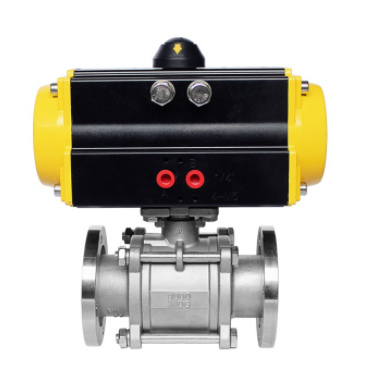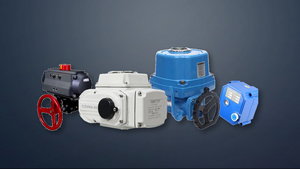Vacuum valve refers to the vacuum state of the inner cavity of the valve, usually called negative pressure, and the inner cavity pressure is lower than atmospheric pressure. Valves used in vacuum piping systems include vacuum ball valves, vacuum butterfly valves, and vacuum diaphragm valves. The medium is high purity.
So, what the features are?
1. It adopts 1/4 rotary pneumatic or electric actuator, which works smoothly. The valve switch has electric signal output, which can be used for both hand and electricity.
2. Not only the structure is simple, the sealing is good, but also the installation size is small, the driving torque is small, the operation is simple, and it is easy to realize fast opening and closing.
3. It can be used under high vacuum or under low pressure system to achieve the advantage of using both positive and negative pressure.
The pressure is lower than atmospheric pressure, and the pressure drop on the disc cannot exceed 1 kgf/cm2. The working temperature of the medium depends on the process of using the device. The temperature generally does not exceed the range of -70 ~ +150℃.
The most basic requirement for this type of valve is to ensure a high degree of sealing of the connection and the compactness of the structure and gasket material.
According to the medium pressure, the vacuum valve can be divided into four groups:
1) Low vacuum valve: medium pressure p=760~1mmHg;
2) Medium vacuum valve: p=1×10-3 mmHg.
3) High vacuum valve: p=1×10-4 ~1×10-7 mmHg;
4) Ultra-high vacuum valve: p≤1×10-8 mmHg.
A vacuum bellows globe valve with a valve stem that moves linearly, which is widely used in vacuum valves.
 And what are the conditions of use?
And what are the conditions of use?
1. The medium is pure air or non-corrosive gas.
2. The temperature of the medium is determined by the extreme temperature of the rubber used.
Factors to be considered when selecting a vacuum valve (basis)
1. According to the working pressure, there are low vacuum valves, high vacuum valves and ultra-high vacuum valves.
2. According to the structural characteristics, there are flapper valves, flapper valves, butterfly valves, ball valves, diaphragm valves, angle valves, straight-way valves, and three-way valves.
3. According to the transmission principle, there are manual, pneumatic, electric and electromagnetic. Generally, pneumatic is a process in which electromagnetic pilots and cylinders perform actions, and a pilot valve cylinder can also be manually controlled to perform actions. Electric is both hand and electricity, and can be operated manually when the power is off.
4. According to the material, there are valves with stainless steel, carbon steel, and aluminum alloy as the main material.
5. According to the dynamic seal material, it can also be divided into metal seal and non-metal seal valve. O-shaped rubber rings for shaft seals generally have a leak rate of 10-4Pa.L/S for vacuum dynamic seals. The vacuum degree is not high during shaft movement and can be used under low vacuum conditions; shaft seals are metal corrugated. The tube is sealed, and its leakage rate is 10-7Pa.L/S, which is suitable for use under ultra-high vacuum conditions.
--- END ---


















